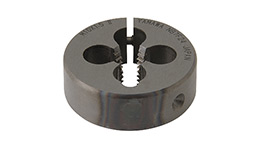
Sep . 19, 2024 04:13
Back to list
heat exchanger
Heat exchangers are vital devices in various industrial, commercial, and residential applications, serving the crucial role of transferring heat from one medium to another. These devices facilitate energy efficiency by allowing systems to reclaim and reuse heat, thereby reducing fuel consumption and operational costs.
The primary function of a heat exchanger is to transfer heat between two or more fluids. Typically, these fluids can either be liquids or gases, and they may be at different temperatures. The heat exchange process often occurs without mixing the two fluids, which is essential for maintaining the integrity of the systems involved. For example, in a refrigeration system, the refrigerant absorbs heat from the interior of a building (or from food, in the case of refrigeration) and releases it outside.
Heat exchangers come in various designs, each suited for different applications. Some of the most common types include shell-and-tube heat exchangers, plate heat exchangers, air-cooled heat exchangers, and double-pipe heat exchangers. Shell-and-tube designs are widely used in chemical processing industries due to their durability and high heat transfer capabilities. Plate heat exchangers are favored for their compact size and efficiency, making them ideal for applications where space is limited.
heat exchanger

The efficiency of a heat exchanger is measured by its effectiveness, which is the ratio of the actual heat transfer to the maximum possible heat transfer
. Various factors affect this performance, including the temperature difference between the two fluids, the flow arrangement (counterflow, parallel flow, or crossflow), and the surface area available for heat transfer. Enhancing these factors can lead to significant improvements in energy efficiency.In addition to energy recovery applications, heat exchangers play a critical role in numerous processes, including power generation, HVAC systems, and food processing. In power plants, they help in cooling steam and improving the overall efficiency of the cycle. In residential heating and cooling, heat exchangers are integral components of systems like furnaces and air conditioners, ensuring comfortable indoor environments year-round.
As industries continue to focus on sustainability and reducing emissions, the importance of heat exchangers will only continue to grow. Innovations in materials and designs, such as those that improve thermal conductivity and resistance to fouling, are making these devices even more efficient. Consequently, heat exchangers are poised to play an essential role in the transition to a more energy-efficient and environmentally friendly future. By embracing these advancements, industries can enhance their operational efficiency while minimizing their ecological footprint.
Latest news
-
Safety Valve Spring-Loaded Design Overpressure ProtectionNewsJul.25,2025
-
Precision Voltage Regulator AC5 Accuracy Grade PerformanceNewsJul.25,2025
-
Natural Gas Pressure Regulating Skid Industrial Pipeline ApplicationsNewsJul.25,2025
-
Natural Gas Filter Stainless Steel Mesh Element DesignNewsJul.25,2025
-
Gas Pressure Regulator Valve Direct-Acting Spring-Loaded DesignNewsJul.25,2025
-
Decompression Equipment Multi-Stage Heat Exchange System DesignNewsJul.25,2025

